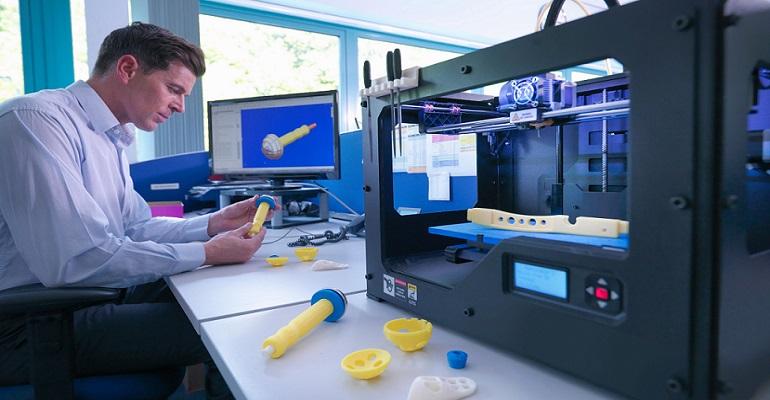3D Printed Blood Plasma Can Speed Up Wound Healing
A multinational group of researchers has discovered that 3D-printing a natural substance found in human blood can help speed the healing of complicated skin wounds, they said. The solution also has potentially broad application across other medical treatments and bioengineering.
Scientists at Ireland’s RCSI University of Medicine and Health Sciences worked with platelet-rich plasma (PRP), a substance that naturally occurs in the blood to heal the skin and already is used in injections to treat muscular-skeletal conditions, hair loss, and other maladies.
Specifically, the team—comprised of researchers in the Tissue Engineering Research Group (TERG) and SFI AMBER Centre based at RCSI’s Department of Anatomy and Regenerative Medicine–extracted PRP from the blood of a patient with a complex skin wound. They then manipulated it through 3D printing to form an implant for tissue repair that can be placed using a single surgical procedure to speed healing.
The RSCI team collaborated with researchers at 3B’s Research Group at the University of Minho in Portugal; and the Trinity Centre for Biomedical Engineering and the SFI Centre for Advanced Materials and Bioengineering Research, both in Ireland.

Promising Results
Results of the work showed that application of the 3D-printed PRP implant helped to speed up the healing of the wound by enabling efficient vascularization, or the development of new blood vessels, as well as inhibited fibrosis, or the scarring/thickening of tissue.
Both of these conditions are essential for effective wound healing, said Professor Fergal O’Brien, professor of bioengineering and regenerative medicine at RCSI. However, scarring can still occur even though PRP is already present in someone’s blood, which can inhibit healing, he said.
By 3D-printing PRP into a biomaterial scaffold, however, “we can increase the formation of blood vessels while also avoiding the formation of scars, leading to more successful wound healing,” O’Brien said in a press statement.
Researchers published a paper on the research in the journal Advanced Functional Materials.
In addition to speeding up the healing of wounds and other skin afflictions, the work also has potential for use in tissue regeneration, with application in regenerative medicine, 3D printing, and personalized medicine markets, he added.
Article source: Qmed and MD+DI









